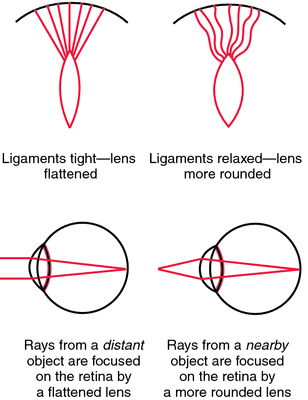The nurse is listening to the breath sounds of young adult client with severe asthma. The nurse recognizes that air passing through narrowed bronchioles would produce which of these adventitious sounds?
Wheezes
Whispered pectoriloquy
Bronchial sounds
Bronchophony
The Correct Answer is A
A. Wheezes:
Wheezes are continuous, high-pitched, whistling lung sounds that are heard especially during expiration and sometimes during inspiration. They are caused by the rapid movement of air through narrowed or constricted airways, which is common in conditions like asthma. Wheezing is a characteristic adventitious sound associated with asthma and other obstructive respiratory disorders.
B. Whispered Pectoriloquy:
Whispered Pectoriloquy is an increased loudness of whispering noted during auscultation with a stethoscope on the lung fields. This phenomenon occurs when sound is transmitted clearly through consolidated or compressed lung tissue, making whispered sounds more distinct. It is a sign of lung consolidation, often seen in conditions like pneumonia.
C. Bronchial Sounds:
Bronchial sounds are harsh, high-pitched sounds heard over the trachea and the large bronchi. These sounds are normally heard during expiration. If they are heard over peripheral lung areas, it can indicate consolidation or compression of lung tissue, possibly due to pneumonia or tumor.
D. Bronchophony:
Bronchophony is a phenomenon in which spoken sounds are heard more clearly and distinctly through the stethoscope on auscultation of the lungs. Normally, sounds are muffled during auscultation. Increased clarity of spoken sounds can indicate lung consolidation, similar to whispered pectoriloquy, and is often associated with conditions like pneumonia.
Nursing Test Bank
Naxlex Comprehensive Predictor Exams
Related Questions
Correct Answer is A
Explanation
A. When part of the lung is obstructed or collapsed: This statement is accurate. Unequal chest expansion can occur when part of the lung is obstructed or collapsed, preventing the affected area from expanding normally during inhalation.
B. When bulging of the intercostal spaces is present: This statement is not accurate. Unequal chest expansion typically refers to decreased expansion on one side, not bulging of intercostal spaces.
C. In an obese patient: This statement is not accurate. Obesity can affect breathing patterns and lung function, but it is not the primary cause of unequal chest expansion.
D. When accessory muscles are used to augment respiratory effort: This statement is not accurate. The use of accessory muscles to augment respiratory effort can be a sign of respiratory distress, but it doesn't directly cause unequal chest expansion. Unequal expansion is more indicative of specific lung conditions or issues with lung mechanics.
Correct Answer is A
Explanation
A. The pupils constrict when the examiner's index finger slowly moves toward the client's nose.
This statement is correct. Visual accommodation is the process by which the eye's lens changes shape to focus on objects at varying distances. When an object moves closer to the eyes, the pupils constrict to adjust and focus on the near object, preventing double vision.
B. The client involuntarily blinks in the presence of bright light directed over the pupils during the eye exam.
This statement describes the pupillary light reflex, not visual accommodation. The pupillary light reflex is the response of the pupils to light exposure.
C. The client's peripheral vision becomes sharper when the examiner shines a light over the pupils.
This statement is not accurate. Peripheral vision sharpness is not related to visual accommodation. Visual accommodation mainly involves adjusting focus for objects at varying distances.
D. The pupils dilate when the examiner's index finger slowly moves toward the client's nose.
This statement is incorrect. Pupils should constrict, not dilate, when focusing on a near object (as in visual accommodation). Dilation occurs in low-light conditions or in response to sympathetic stimulation.

Whether you are a student looking to ace your exams or a practicing nurse seeking to enhance your expertise , our nursing education contents will empower you with the confidence and competence to make a difference in the lives of patients and become a respected leader in the healthcare field.
Visit Naxlex, invest in your future and unlock endless possibilities with our unparalleled nursing education contents today
Report Wrong Answer on the Current Question
Do you disagree with the answer? If yes, what is your expected answer? Explain.
Kindly be descriptive with the issue you are facing.
